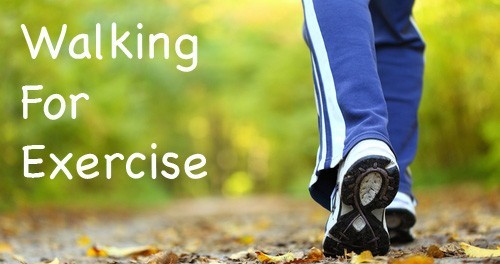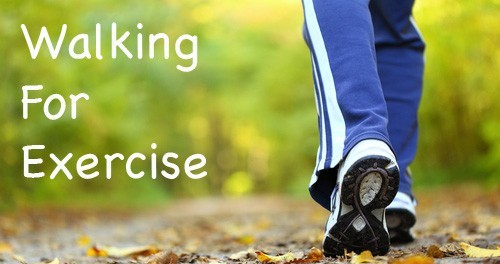Walk Talk Series
Day 47 – Walking Injury – Strains, Sprains and Bruises
Stress Relief
After these weeks of walking and nutrition focus, are you feeling more stress or less? is the walking helping to relieve the stress? Have you reached the point of knowing how to eat well without worry?
 Today’s Walk Fat-Burning Walk:
Today’s Walk Fat-Burning Walk:
- 40-75 minute walk in the fat-burning zone at 60-70% of your maximum heart rate
- Warm up with 5 minutes at a very easy pace
- Find a safe spot with a wall or pole to do a 5 minute easy stretching routine
- Now resume your walk at a comfortable pace
- End with 5 minutes of gentle stretching
Advanced walkers: Economy Walk
Exercise: Total Body Exercises
Treat a Walking Injury – Strains, Sprains and Bruises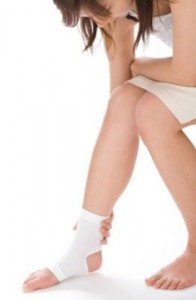
If you’re an active person, you’ll probably get a sprain or a strain at some point. They’re common injuries, especially for people who are training hard or are into sports.
What Are Strains and Sprains?
Muscles contract and relax (almost like rubber bands) to help your body move. So a strain is exactly what it sounds like: a muscle that has been stretched too far. It’s common for people to strain the muscles in their backs, necks, or legs.
Bones meet at joints, such as elbows, knees, or shoulders. That’s where your body bends and rotates. Strong, elastic bands of tissue called ligaments hold bones together in the joints. A sprain happens when those ligaments have been overstretched (mild sprain) or torn (severe sprain). Ankles, wrists, and knees sprain easily.
How Is a Strain Different From a Sprain?
Even though both can hurt a lot, strains are not as serious as sprains. Because a strain is pain in the muscle, it may start to hurt immediately or several hours later. The area will be tender and swollen and might also appear bruised.
A sprain will probably start to hurt right away. Usually the injury will swell and look bruised, it may be hard to walk or move the injured part, and you might even think you have broken a bone.
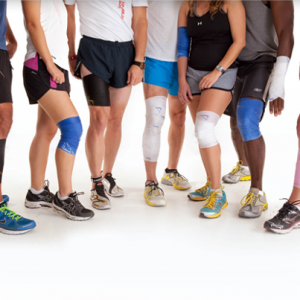 How Does a Strain or Sprain Happen?
How Does a Strain or Sprain Happen?
Strains often happen when you put a lot of pressure on a muscle or you push it too far, such as when lifting a heavy object. Strains may be more likely to happen if you haven’t warmed up first to get blood circulating to the muscles. They’re also common for someone starting a new exercise routine after being inactive for some time.
Sprains are caused by injuries, such as twisting your ankle. This kind of injury is common in sports, but can also happen any time you trip or fall.
What if I Get a Strain or Sprain?
If you get a strain or sprain, try not to use the part of your body that’s hurt. That means not walking on a hurt ankle or using a hurt arm. It can be hard to tell the difference between a sprain and a broken bone, so it’s often a good idea to see a doctor. In some cases, you might need to go to the emergency department.
What Will the Doctor Do?
First, a doctor will look at your injury. He or she may gently touch the area, check the color, feel if your skin is warm or cold, and look for swelling and tenderness. If you hurt your ankle, your doctor might ask to see if you can stand on it. In some cases, the doctor will order an X-ray to tell if the bone is broken.
- If you have a sprain, the doctor will probably have you wear a splint or temporary cast to support and protect the injured area. He or she may wrap the injury with an elastic bandage to reduce swelling and provide extra support. Also, the doctor will probably tell you to take some pain medication.
- If you have a strain, the doctor will probably tell you to rest the injury and maybe take some pain medication.
What Happens Next?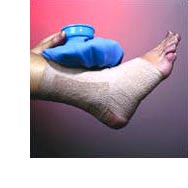
It’s very important to follow your doctor’s instructions. When you get home, think RICE as a way to remember how to take care of your injury:
- Rest (the injured part of the body)
- Ice (apply cold packs to the injury to help bring down swelling)
- Compression (wrap the injury firmly with an elastic compression bandage or splint to prevent and decrease swelling)
- Elevation (raise the injured part so it’s higher than your heart, also to prevent swelling)
After 24 hours, it’s OK to use warm compresses or a heating pad to soothe aching muscles. Take any pain medications that have been ordered by your doctor.
A strain takes about 1 week to heal. A bad sprain may take longer — as long as 3 to 4 weeks to heal or sometimes even longer. While your strain or sprain heals, take it easy and don’t do anything that could cause another injury.
What Is a Bruise?
A bruise, also called a contusion (pronounced: kun-too-zhen) or an ecchymosis (pronounced: eh-ky-moe-sis), happens when a part of the body is struck and the muscle fibers and connective tissue underneath are crushed but the skin doesn’t break. When this occurs, blood from the ruptured capillaries (small blood vessels) near the skin’s surface escapes by leaking out under the skin. With no place to go, the blood gets trapped, forming a red or purplish mark that’s tender when you touch it — a bruise.
Bruises can happen for many reasons, but most are the result of bumping and banging into things — or having things bump and bang into you. Fortunately, as anyone who’s ever sported a shiner knows, the mark isn’t permanent.
What Can I Do to Help Myself Feel Better?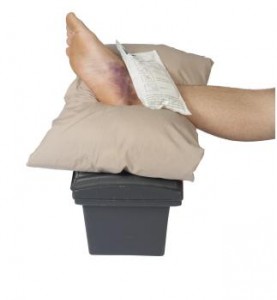
It’s hard to prevent bruises, but you can help speed the healing process. When you get a bruise, you can use stuff you find right in your freezer to help the bruise go away faster. Applying cold when you first get a bruise helps reduce its size by slowing down the blood that’s flowing to the area, which decreases the amount of blood that ends up leaking into the tissues. It also keeps the inflammation and swelling down. All you have to do is apply cold to the bruise for half an hour to an hour at a time for a day or two after the bruise appears.
Another way to help heal your bruise is to elevate the bruised area above the level of your heart. In other words, if the bruise is on your shin, lie down on a couch or bed and prop up your leg. This will slow the flow of the red blood cells to the bruise because more of the blood in your leg will flow back toward the rest of your body instead of leaking out into the tissues of your leg. If you keep standing, more blood will flow to your bruised shin and the bruise will grow faster.
 When to See a Doctor
When to See a Doctor
Minor bruises are easily treated, but it’s probably best to talk to a doctor if:
- A bruise doesn’t go away after 2 weeks.
- You bruise often and you haven’t been bumping into things.
- Bruises seem to develop for no known reasons.
- A bruise is getting more painful.
- Your bruise is swelling.
- You can’t move a joint.
- The bruise is near your eye.

